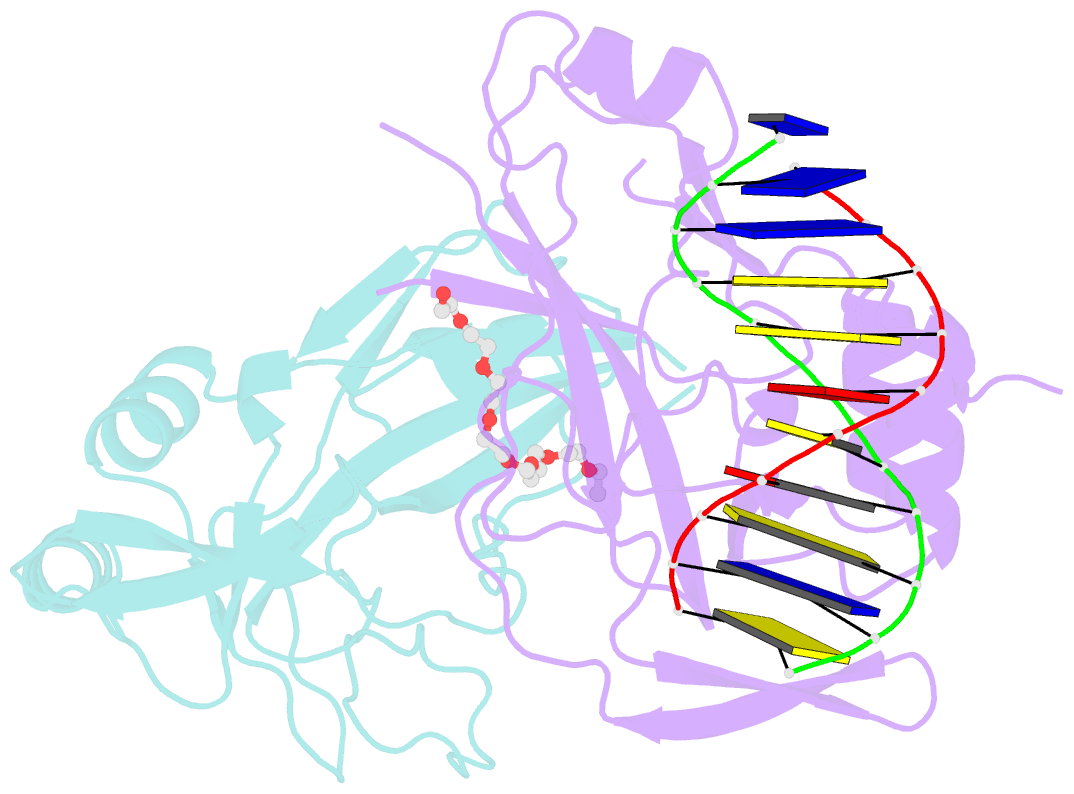Summary information and primary citation
- PDB-id
- 2x6v; SNAP-derived features in text and JSON formats;
DNAproDB
- Class
- transcription-DNA
- Method
- X-ray (2.2 Å)
- Summary
- Crystal structure of human tbx5 in the DNA-bound and DNA-free form
- Reference
- Stirnimann CU, Ptchelkine D, Grimm C, Muller CW (2010): "Structural Basis of Tbx5-DNA Recognition: The T-Box Domain in its DNA-Bound and -Unbound Form." J.Mol.Biol., 400, 71. doi: 10.1016/J.JMB.2010.04.052.
- Abstract
- TBX5, a member of the T-box transcription factor family, plays an important role in heart and limb development. More than 60 single point or deletion mutations of human TBX5 are associated with Holt-Oram syndrome that manifests itself as heart and limb malformations in 1 out of 100,000 live births. The majority of these mutations are located in the TBX5 T-box domain. We solved the crystal structures of the human TBX5 T-box domain in its DNA-unbound form and in complex with a natural DNA target site allowing for the first time the comparison between unbound and DNA-bound forms. Our analysis identifies a 3(10)-helix at the C-terminus of the T-box domain as an inducible recognition element, critically required for the interaction with DNA, as it only forms upon DNA binding and is unstructured in the DNA-unbound form. Using circular dichroism, we characterized the thermal stability of six TBX5 mutants containing single point mutations in the T-box domain (M74V, G80R, W121G, G169R, T223M, and R237W) and compared them with wild-type protein. Mutants G80R and W121G show drastically reduced thermal stability, while the other mutants only show a marginal stability decrease. For all TBX5 mutants, binding affinities to specific and nonspecific DNA sequences were determined using isothermal titration calorimetry. All TBX5 mutants show reduced binding affinities to a specific DNA target site, although to various degrees. Interestingly, all tested TBX5 mutants differ in their ability to bind unspecific DNA, indicating that both sequence-specific and unspecific binding might contribute to the misregulation of target gene expression.





